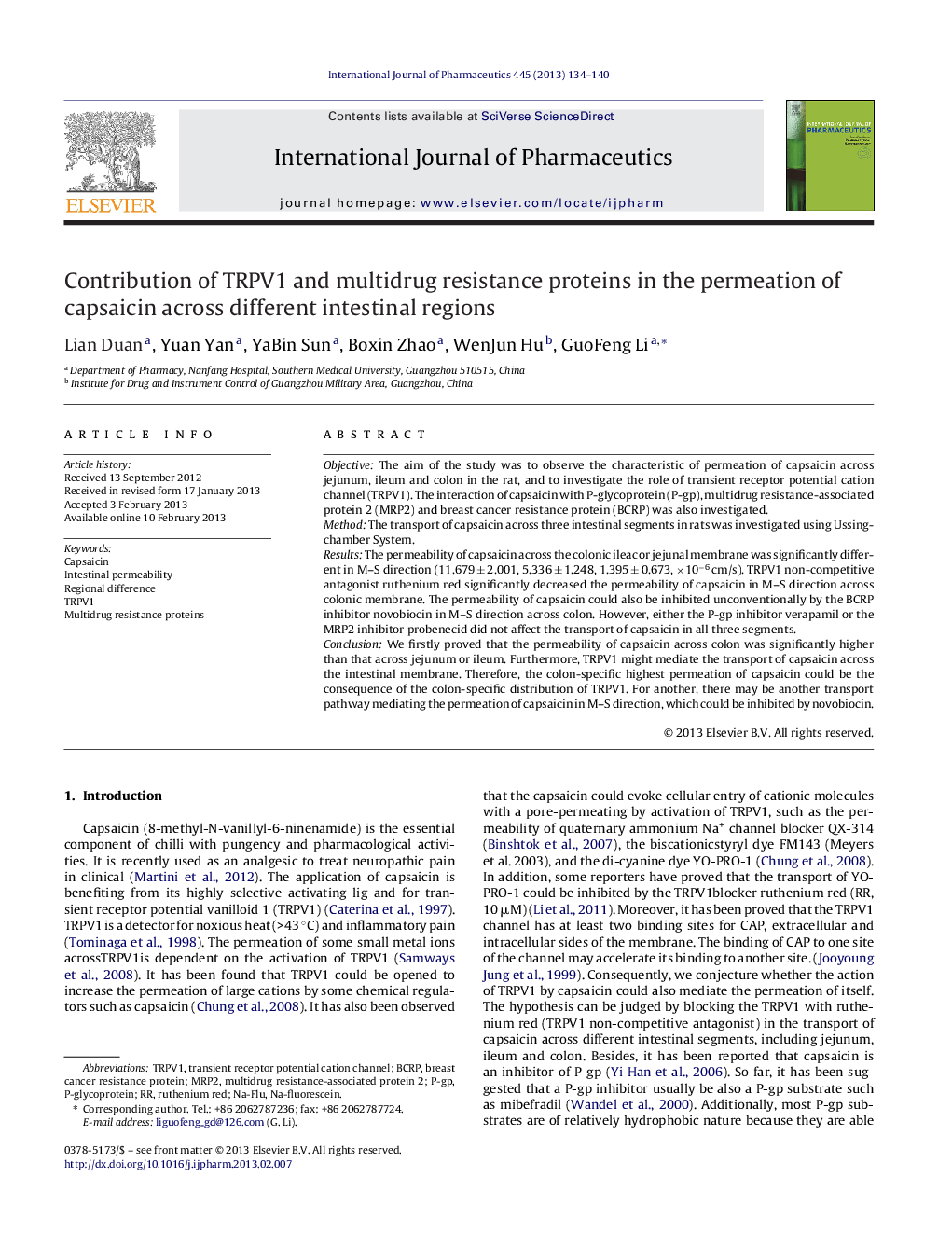| Article ID | Journal | Published Year | Pages | File Type |
|---|---|---|---|---|
| 2502647 | International Journal of Pharmaceutics | 2013 | 7 Pages |
ObjectiveThe aim of the study was to observe the characteristic of permeation of capsaicin across jejunum, ileum and colon in the rat, and to investigate the role of transient receptor potential cation channel (TRPV1). The interaction of capsaicin with P-glycoprotein (P-gp), multidrug resistance-associated protein 2 (MRP2) and breast cancer resistance protein (BCRP) was also investigated.MethodThe transport of capsaicin across three intestinal segments in rats was investigated using Ussing-chamber System.ResultsThe permeability of capsaicin across the colonic ileac or jejunal membrane was significantly different in M–S direction (11.679 ± 2.001, 5.336 ± 1.248, 1.395 ± 0.673, ×10−6 cm/s). TRPV1 non-competitive antagonist ruthenium red significantly decreased the permeability of capsaicin in M–S direction across colonic membrane. The permeability of capsaicin could also be inhibited unconventionally by the BCRP inhibitor novobiocin in M–S direction across colon. However, either the P-gp inhibitor verapamil or the MRP2 inhibitor probenecid did not affect the transport of capsaicin in all three segments.ConclusionWe firstly proved that the permeability of capsaicin across colon was significantly higher than that across jejunum or ileum. Furthermore, TRPV1 might mediate the transport of capsaicin across the intestinal membrane. Therefore, the colon-specific highest permeation of capsaicin could be the consequence of the colon-specific distribution of TRPV1. For another, there may be another transport pathway mediating the permeation of capsaicin in M–S direction, which could be inhibited by novobiocin.
Graphical abstractFigure optionsDownload full-size imageDownload high-quality image (201 K)Download as PowerPoint slide
